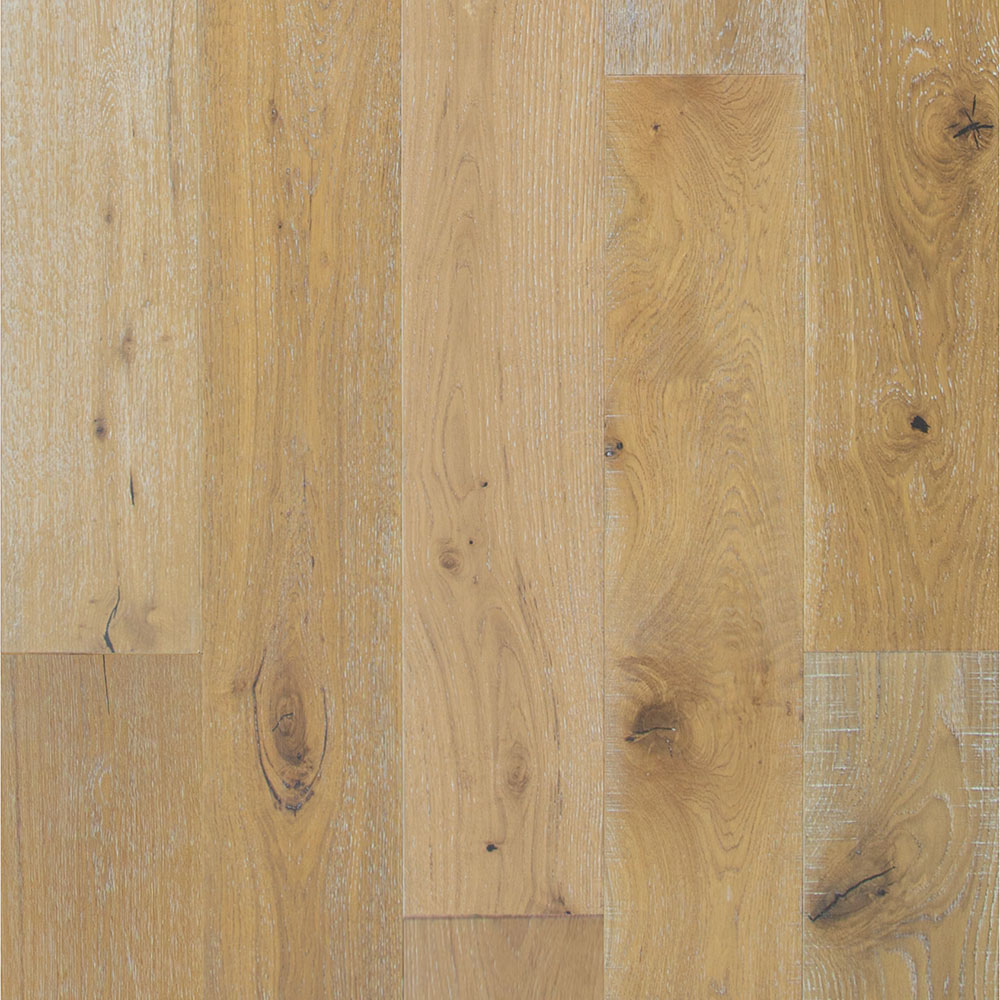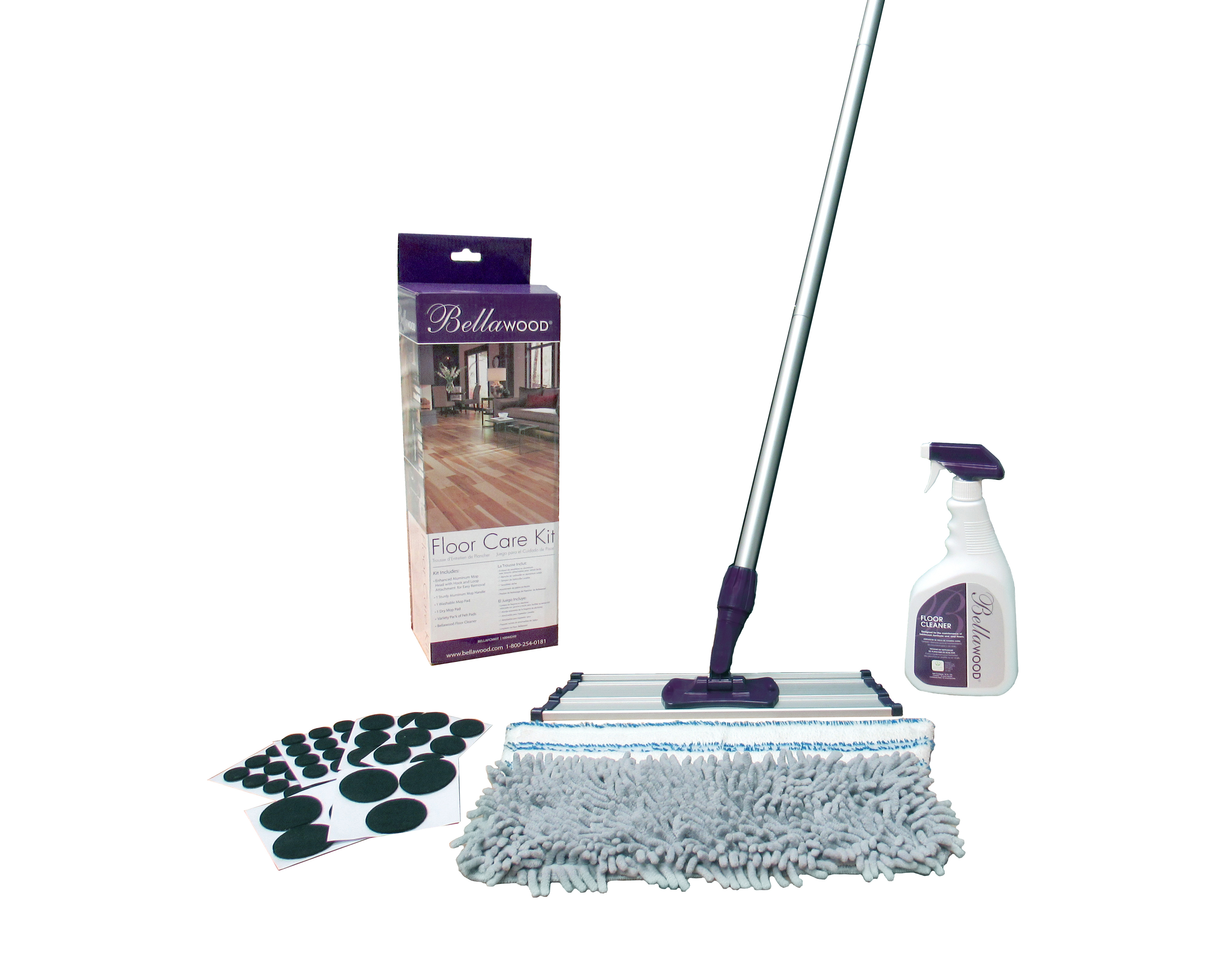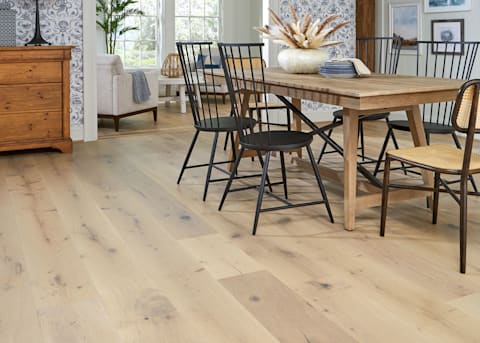- Home
- Education
- Flooring Basics
- Flooring Basics: All You Need to Know About Engineered Hardwood Flooring
Flooring Basics: All You Need to Know About Engineered Hardwood Flooring
Engineered hardwood is an innovative type of hardwood flooring. Judging solely from appearances, it’s difficult to perceive any difference between solid and engineered hardwood floors.
Engineered hardwood is an innovative type of hardwood flooring. Judging solely from appearances, it’s difficult to perceive any difference between solid and engineered hardwood floors. Beneath the surface, however, a unique, layered construction gives these floors a host of enhanced characteristics that make it a popular option for modern homes.

What is Engineered Hardwood?
Engineered hardwood is an innovative type of hardwood flooring that combines a real hardwood veneer on top of a high-quality core made from plywood, lumber core, medium-density fiberboard, or rigid vinyl. This construction makes it more stable and less prone to warping and cupping due to changes in moisture and temperature compared to solid hardwood. From the surface, it’s tough to tell the difference between solid and engineered hardwood floors, making engineered hardwood a fantastic choice for those who want the beauty of wood with added performance benefits.
Key Characteristics and Benefits of Engineered Hardwood
Real Wood
The top layer of an engineered hardwood board, known as the veneer, is made from natural hardwood. This is the layer that you see and touch, so you get the same warmth and richness that you’d get with a solid hardwood floor.
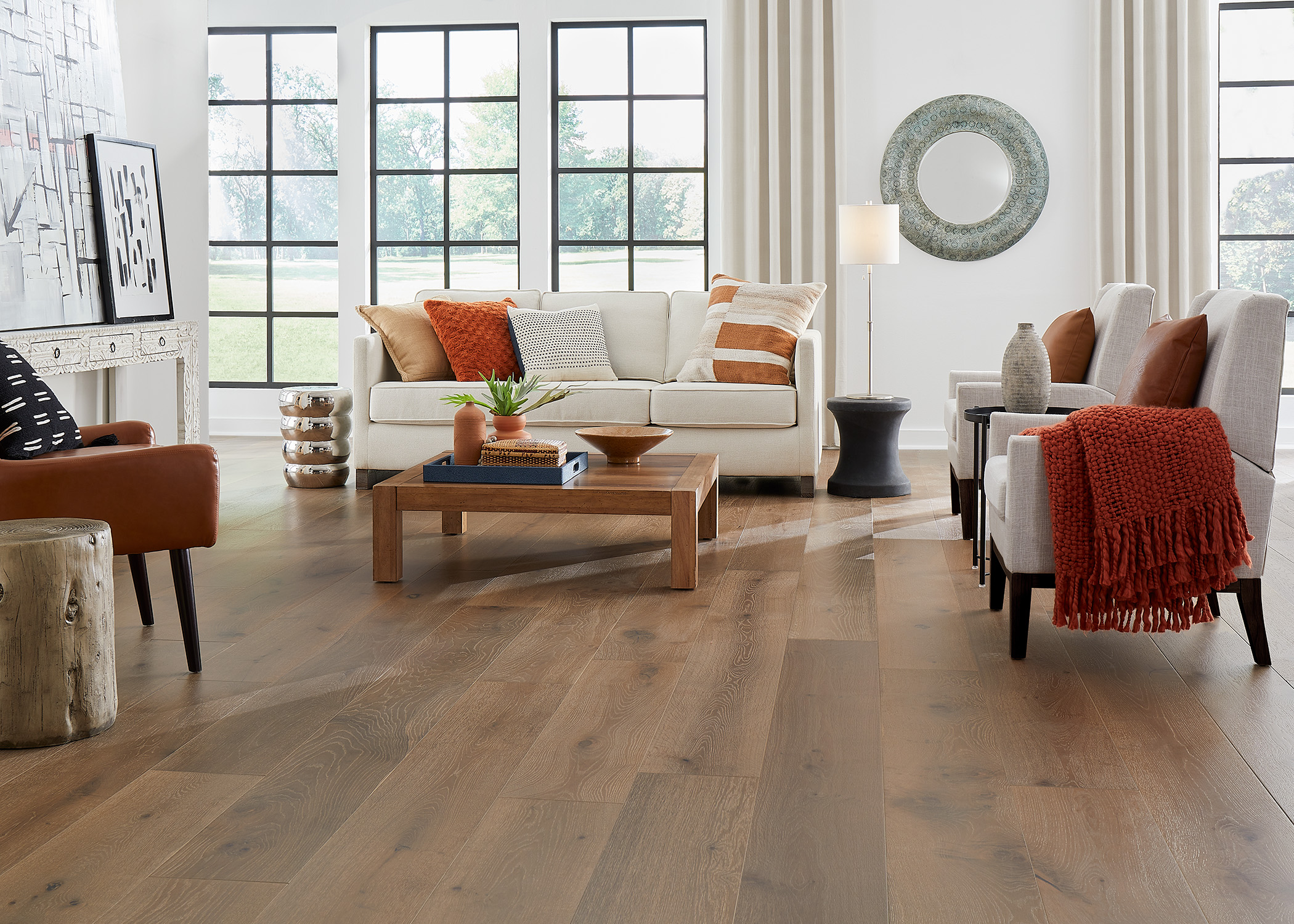
Enhanced Stability
The core layer gives engineered hardwood flooring enhanced strength and stability compared to solid hardwood. There are four main types of engineered hardwood core:
- Plywood Core: Provides excellent stability and strength.
- Lumber Core: Offers the feel of solid wood with enhanced stability.
- MDF Core: Medium-density fiberboard cores are cost-effective and stable.
- Rigid Vinyl Core: Makes this flooring water-resistant and ideal for moisture-prone areas.
Versatility
One of the standout features of engineered hardwood is its installation versatility. Engineered hardwood can be installed on any level of the home, including basements where moisture levels can be higher. Its construction allows for several installation methods:
- Nail-Down: Ideal for wooden subfloors.
- Glue-Down: Suitable for concrete subfloors.
- Nail w/Glue Assist: One of the sturdiest and most stable installations.
- Floating: Easy to install with click-lock edges, making it a great option for DIY projects.
Water-Resistant
Many engineered hardwood floors, like our North Cape White Oak, come with our AquaSeal technology water-resistant features, making them suitable for kitchens, bathrooms and other areas that might experience moisture. This added resistance helps protect your floor from spills and humidity.
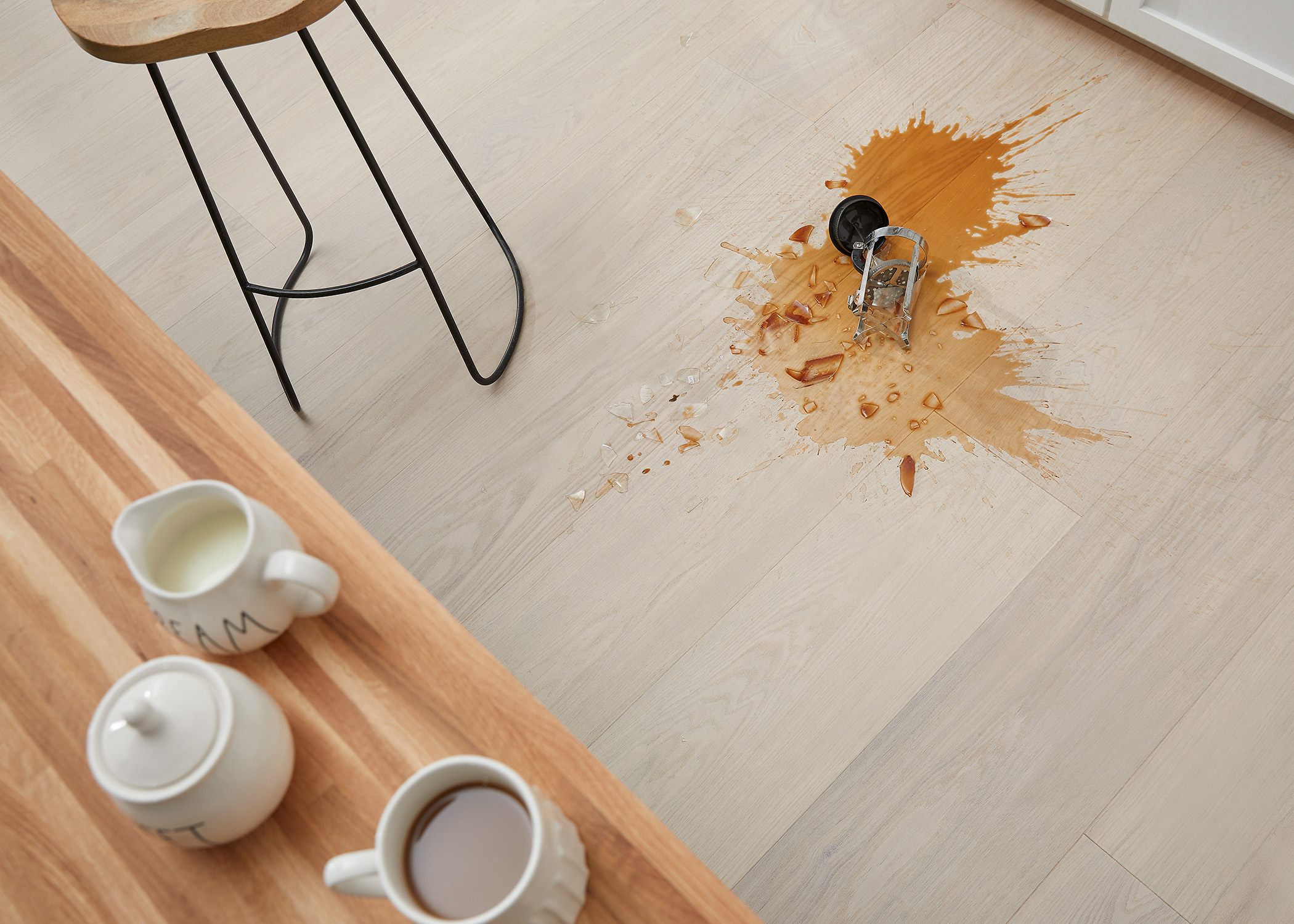
Stylish and Functional
With a variety of finishes and styles, engineered hardwood can complement any decor. Some options, like our Claire Gardens Oak and Amelia Island White Oak, even include extra-wide or extra-long planks, which are often not available with solid hardwood. Explore our range of styles here.
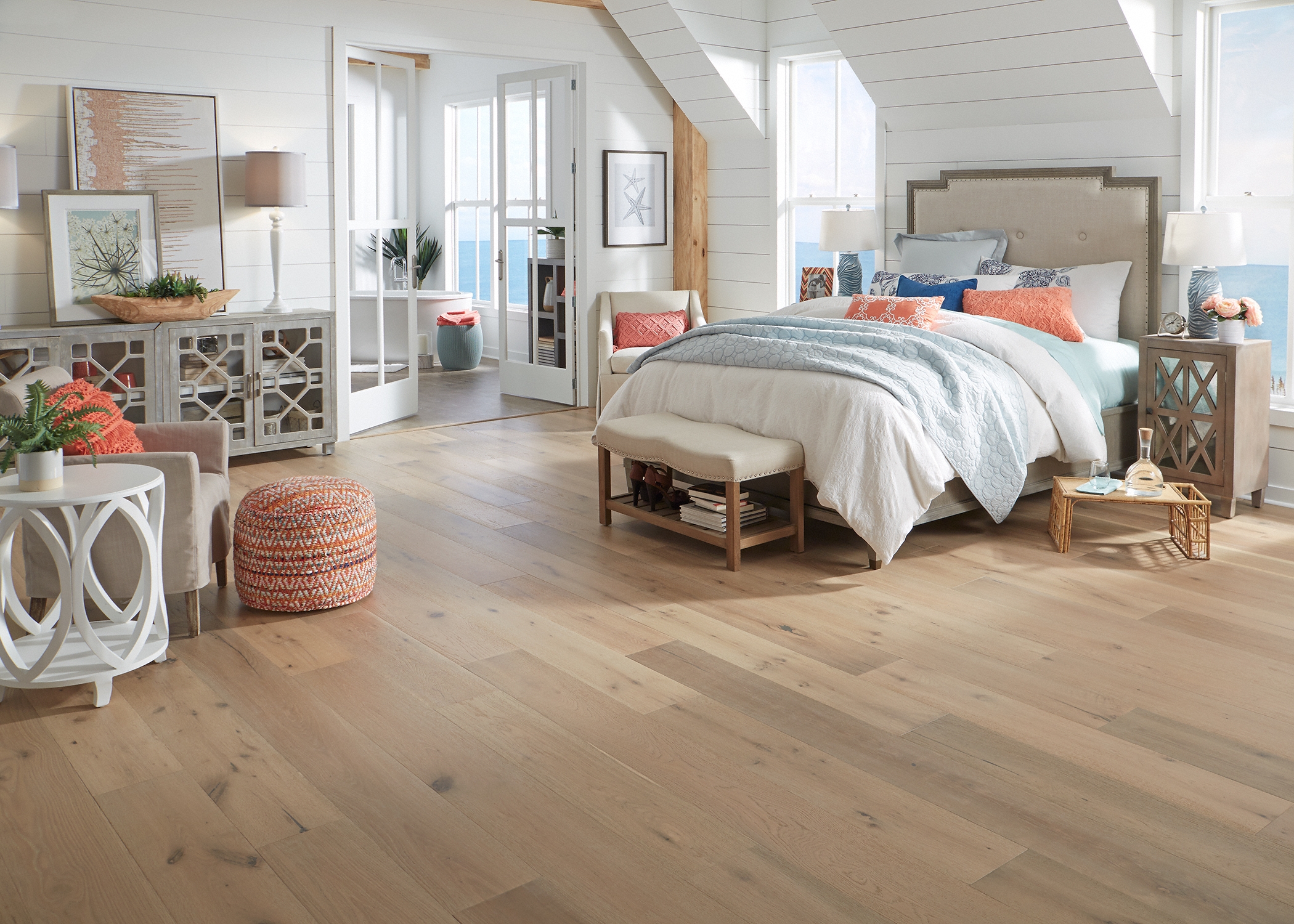
Maintaining Your Engineered Hardwood
Proper maintenance can extend the life of your engineered hardwood floor. Regular dry-mopping and occasional damp-mopping with a wood cleaner can keep your floors looking pristine. While some engineered hardwood floors can be refinished, this depends on the thickness of the veneer. It’s essential to check the manufacturer’s guidelines to determine if and how often your floor can be refinished.
Follow LLStyle on Instagram and Pinterest. Post or share photos and tag @LLFlooringOfficial.
Learn about home improvement and design with fun and informative videos. Subscribe to the LL Flooring YouTube Channel. Leave comments or ideas that helped you and join the community.


